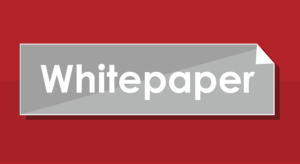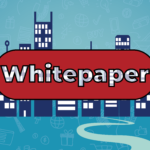Almost everyone has had some experience during which two or more people have been working on the same task at the same time. In such cases, it is often hard to determine who has the “master copy” of the project, and changes made by one individual can easily get lost or overwritten by changes made by someone else working on the same thing. If, for example, you and I are both given the same spreadsheet and told to perform some analysis and report on the results, it would be very difficult to combine both of our changes and different calculations after the fact to create a single report, and we would likely come up with different conclusions. Now imagine that we are not working with a spreadsheet, but with millions of pieces of data across an enterprise, and there are not only you and I, but hundreds of other individuals and systems manipulating the data, all at the same time. Because situations like this happen every day within large organizations, it is of utmost importance to establish a comprehensive trusted source of data in order to maintain systems that are complete, consistent, and correct. An organization will have established a trusted source of “master” data across the enterprise when its information systems provide a single version of every item of shared data that is consistent with the rest of the data in the system – and when everyone who needs a data item knows where to go to find that authoritative version. While establishing such a trusted source is extremely important, there are obstacles and challenges that threaten the trusted source in numerous ways:
- A user may be confronted with conflicting information from different sources and not offered any help in interpreting or resolving the differences. Worse, the user may happen on one version of the data, never suspect that different (and perhaps truer) versions exist, and make decisions based on inaccurate information.
- The information obtained by a user is often incomplete, because the missing information is stored in a system that is “too many clicks away” from the portal through which the user is accessing the data.
- There is a lot of redundant data entry.
- Sources sending information into the enterprise database often have conflicts.
- Attempts to achieve a single trusted source by multi-directional synchronization of independent databases (containing, for example, order and return information) present the danger that timing problems may cause valid data to be overwritten by invalid data.
Even if a database contains a single definitive copy of all the data, those data are of no use unless the user application’s interface and other user aids enable people to find the information they need, when and where they need it. The master database needs accurate, legible, documented, understandable, and up-to-date models to support the development of user interfaces and aids that make this data available to its users. Finally, once a user has obtained the one true version of some piece of data, one more thing has to happen to turn the data into valid and valuable information: The user must accurately understand what it means. Standardizing procedures and processes across the enterprise can help an organization to ensure that users understand the data:
- Standard codings, terminology, and classifications for crucial shared entities (accounts, projects, etc.) need to be developed, adopted and put into common use.
- Time-tagging data items can prove useful in informing users how up-to-date they are.
- Educating new users of an application (and educating current users of a changing application) on the meaning and timeliness of the information they will be obtaining through that application is an essential component of maintaining the integrity of the database and the enterprise.
Finding the single source of truth
With the proliferation of silos and channels comes the problem of knowing whose version of the “truth” is correct: where did it originate, and how trustworthy is it? The first part of any information management effort should be to ascertain the owner and original source of each type of data in an information flow. Only this “single source of truth” should be accessed for that data by all the other organizations in the system. It is also important to pay attention to the management of metadata and master data to improve transparency into the lineage and quality of data. Organizations need to consolidate systems that provide data for similar business processes, identifying and resolving duplicate data and incomplete data, so that data is entered and updated consistently in one place…the single source of truth.






